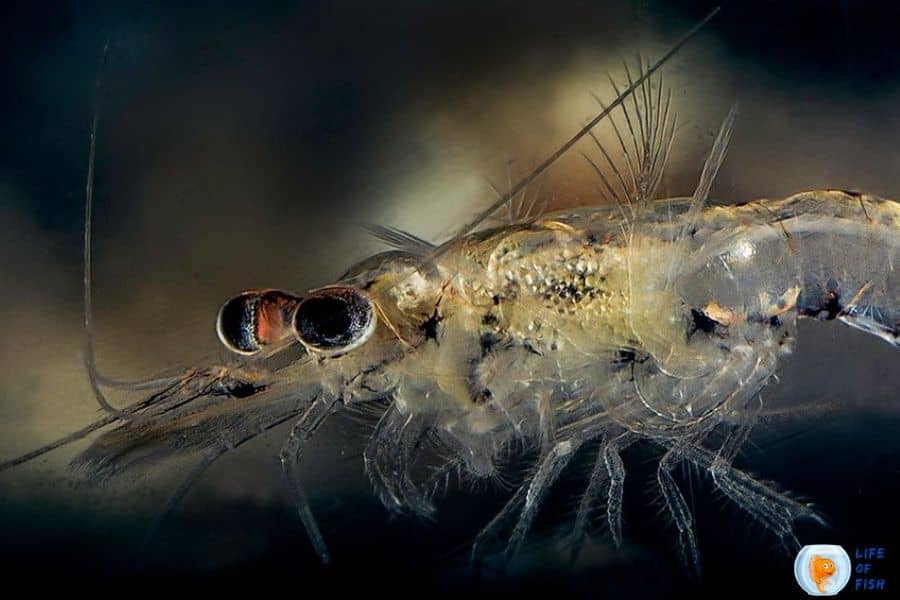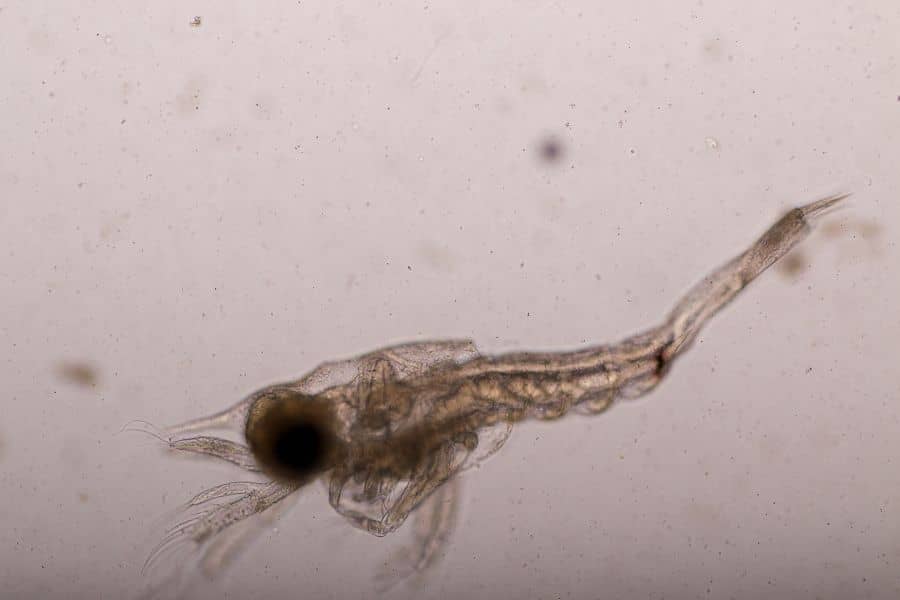My friend once asked me, if my fish won’t eat Mysis shrimp and what should I do about it. He knows I love fish keeping and I might have a solution for his problem. Luckily I had a solution for him. Now I am ready to share it with you. So why did this happen?
There are many reasons that fish do not eat food. If your fish expressly refuses Mysis shrimp, it is most probably, that the mysis are too large for them to swallow. If you have fry, juveniles, or small fish species, they will not eat Mysis as they are too large. You can simply check this by feeding them brine shrimp to them.

Another reason is fish may need several days to get ready for a new feed depending on the species. Further, they may prefer some brands(eg. Hikari) over others and you can feed them with another Mysis brand. Mix them with Selcon or garlic to get them used to it. If your fish does not eat any food, it may be due to several reasons. For Example overfeeding, bad water parameters, stress, improper lighting, pregnancy and infections.
How do I feed Mysis shrimp to fish?
Jump To
The most critical part of feeding fish is to take the right amount to feed your fish. As leftover food degrades water quality and wastes your money. Follow below steps
- If you have frozen Mysis cubes, take out the amount of food your fish could eat within two minutes. Take the food only for a single feeding.
- Use a small cup to thaw the food. Add approximately 4 Tbsp of RO/DI water per cube of food to the thawing cup. You can use tank water as well. Alternatively, you can add any food soaks you use, like silicon, amino acids, or vitamins to the cup. Let it soak for 10-20 minutes or as directed by the food soak.
- Then stir the cup occasionally, until it defrosts.
- You can strain and dispose of any residual liquid from the food or you can also just feed the liquid food mix directly. However, the residual liquid contains high nutrients, and adding it directly to your aquarium may result in the rapid growth of algae. Therefore, many fish keepers do not agree to add them to the aquarium with food.
- Before, you feed the fish with Mysis shrimp, turn off the aquarium’s filtration pumps, and any excessive water flow. Actually, this depends on how active a feeder your fish are. If they like to chase the food leave the pumps on, if they are lazy turn the pumps off. If you turn them off leave them off for a minute or two but don’t forget to turn them back on
- You can just pour the feed into the aquarium directly or you can target feed your fish and corals using your favorite feeding tool or bulb syringe. Make sure you provide only what they can consume within 2-3 minutes at one time. Let the fish eat everything before adding any more.
- If you have any leftover food, you can store it in the refrigerator for feeding later but it’s probably not a good idea to keep the thawed food for any longer than 24-48 hours.
How do you rinse a frozen Mysis?
Some aquarists say you do not need to rinse frozen Mysis, it is a good practice if you have an average normal-size reef tank. This is because the high latitude lake where Mysis come from stimulates these crustaceans to produce a lot of lipids, fats & oils, and these are packaged right along with the shrimp. If you have a huge reef tank with low nutrients, tons of fish and lots of corals, then go ahead and throw cubes in to thaw in the tank. But for a normal-size tank rinsing Mysis before feeding to the fish is a must. You can rinse mysis in two cycles. You will need a tall jar with an inner lip to catch shrimp while skimming off the thawed water.
Just put the desired amount of frozen shrimp into the container and add sufficient RO water. Gently shake the bottle and rinse the shrimp. You can use a rod to stir the mixture. During the first thaw, you can easily see both how cloudy the water is, and how much fatty oil builds up at the surface. Doing just one rinse should remove about 75% of the loose oils. Then remove the water and again add water and rinse the shrimp.
These are gentle rinses that don’t affect the nutritional quality of the shrimp themselves, but significantly reduce how much raw oil goes into the tank and aquarium water. You can keep your tank water safe from all kinds of excess nutrients, cloudiness, and algae problems if you rinse mysis twice before feeding your fish. Also, it does not take a lot of time and it is an operation of a couple of minutes.

Will clownfish eat Mysis?
Clownfish eat pellets, flakes, nori, bloodworms, krill, or anything it thinks of as food. But some aquarists complain that Clownfish do not eat Mysis. This can happen due to various reasons. The primary reason why clownfish do not like to eat Mysis is the Mysis you feed is larger than their mouth and they cannot swallow it directly. If your Clownfish is new to the tank, it spends little time exploring its new environment, and during this time it is reluctant to eat any type of food. Some Clownfish take shrimps to their mouth and then spit them. However, we do not know the reason for such behavior.
Can bettas eat mysis shrimp?
Yes, they eat Mysis shrimp. Bettas are naturally carnivorous and as such, would eat many of the creatures in frozen foods in the wild. Though Mysis shrimp are a staple frozen food in the saltwater hobby, they are perfectly acceptable to feed to Bettas. They are full of fiber which is going to help aid your bettas digestion. Even the fussiest bettas tend to love eating Mysis shrimp.
When you’re feeding your betta Mysis shrimp you only need to give him 1 or 2 per day as they’re quite large. While they shouldn’t be the only thing you feed your betta, they can be a staple. Unlike other foods, they aren’t too rich in fat, but instead, they’re high in fiber and roughage. Mysis shrimp is a great option for Betta fish because of their exoskeleton. This exterior is rich in fiber, which aids the digestion of protein-rich foods. It makes your Betta brighter, more colorful, and more active in their aquarium.

Is mysis or brine shrimp better?
Mysis and Brine shrimps are the most common types of frozen foods. Many species of fish will happily eat both brine shrimp and mysis shrimp as a treat food without issue. So, which one is the better? Let’s take the differences between them.
Firstly, Mysis shrimp, which can get to an inch in length, are usually larger than brine, which grows to 0.3 inches. Secondly, brine shrimp are scientifically identified as shrimp, while mysis are not. When it comes to frozen food mysis is a much more efficient food source for the inhabitants of your saltwater aquarium. It has more proteins and is enriched with nutrients. On the other hand, brine shrimp have little nutrient value if they are not encapsulated with nutrients, but are about a dollar cheaper.
However, which food is better for your fish depends on various factors. Though Mysis are enriched with nutrients, fry, younger fish and some of the smaller fish species can not swallow mysis. This is because Mysis shrimps are comparatively large shrimps. Therefore, if you have smaller fish species, brine shrimp are the ideal food for them. In terms of live food, mysis shrimp are not as readily available and live brine is very healthy for your fish, unlike frozen brine.
Some of the advantages of using Brine shrimp are low prices, easy availability, and potentially high nutritional content than other commercial food types. Further, you can culture them on your own and feed live brine shrimp to your fish. The live brine shrimp can also offer your fish some mental stimulation as they chase the shrimp around too. If you have a planted tank setup or some other type of aquarium that offers plenty of cover and hiding spots for your brine shrimp then it can be possible to create a self-sustaining brine shrimp colony in your tanks too.
The main advantage of mysis shrimp is that they are larger than most other types of shrimp commonly used as food for fish so larger fish, corals, and anemones are more likely to eat them. The disadvantages of Mysis are expensive and not readily available everywhere.
How long does Mysis shrimp last in the fridge?
It is better to eat thawed mysis shrimp within one to two days. If you keep them longer than recommended, the shrimps will decay and lose their nutritious value. Further, It was observed some corals showed less response to the day-old thawed food than freshly thawed shrimps.
Finally My fish won’t eat Mysis shrimp
There could be several reasons for this problem. You have to observe your fish and understand the reasons carefully. However, there are 2 major reasons for this problem and I am sure you learn about those and the solutions to them in this article. I hope you got what you search in this article. Have a nice day.
Read Next : Different Types of Fishing Lures ( Most Common Ones )
